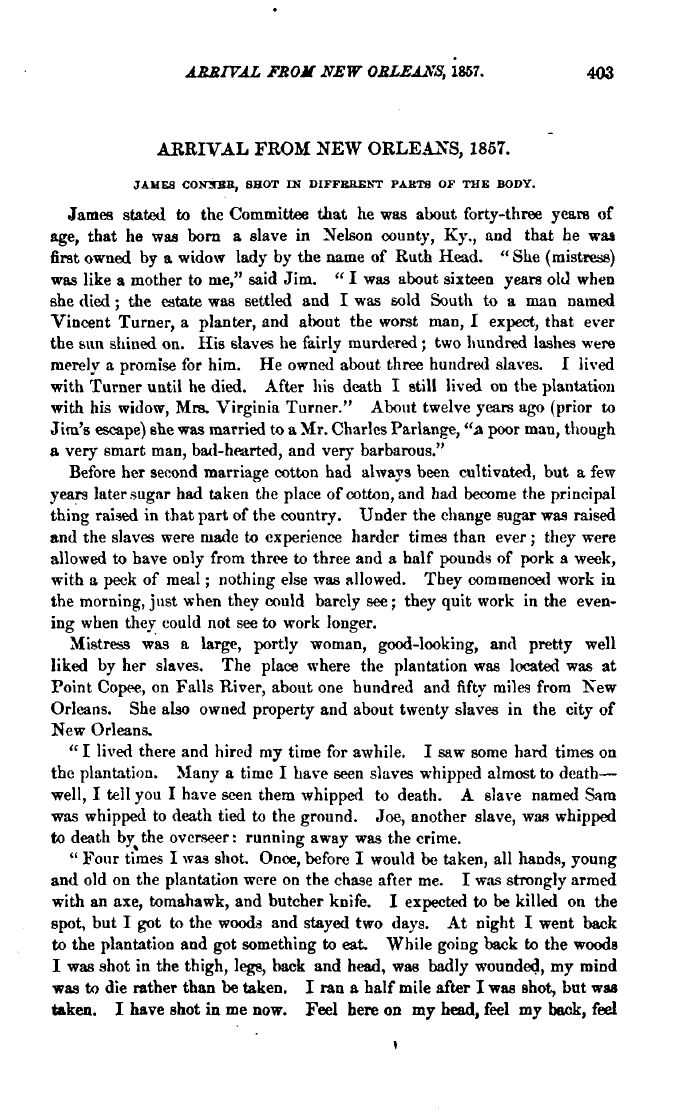 |
||||
 |
||||
| ARRIVAL FROM NEW ORLEANS, 1867. 403 ARRIVAL FROM NEW ORLEANS, 1857. JAMES COK3TBB, SHOT LN DIFFERENT PAKTS OF THE BODY. James stated to the Committee that he was about forty-three yearn of age, that he was born a slave in Nelson county, Ky., and that be was firat owned by a widow lady by the name of Ruth Head. " She (mistress) was like a mother to me," said Jim. " I was about sixteen years olJ when she died; the estate was settled and I was sold South to a man named Vincent Turner, a planter, and about the worst man, I expect, that ever the sun shined on. His slaves he fairly murdered; two hundred lashes were merely a promise for him. He owned about three hundred slaves. I lived with Turner until he died. After his death I still lived on the plantation with his widow, Mrs. Virginia Turner." About twelve years ago (prior to Jim's escape) she was married to a Mr. Charles Parlange, "a poor man, though a very smart man, bad-hearted, and very barbarous." Before her second marriage cotton had always been cultivated, but a few years later sugar had taken the place of cotton, and had become the principal thing raised in that part of the country. Under the change sugar was raised and the slaves were made to experience harder times than ever; they were allowed to have only from three to three and a half pounds of pork a week, with a peck of meal; nothing else was allowed. They commenced work in the morning, just when they could barely see; they quit work in the evening when they could not see to work longer. Mistress was a large, portly woman, good-looking, and pretty well liked by her slaves. The place where the plantation was located was at Point Copee, on Falls River, about one hundred and fifty miles from New Orleans. She also owned property and about twenty slaves in the city of New Orleans. " I lived there and hired my time for awhile. I saw some hard times on the plantation. Many a time I have seen slaves whipped almost to death— well, I tell you I have seen them •whipped to death. A slave named Sam was whipped to death tied to the ground. Joe, another slave, was whipped to death by the overseer: running away was the crime. " Four times I was shot. Once, before I would be taken, all hands, young and old on the plantation were on the chaae after me. I was strongly armed with an axe, tomahawk, and butcher knife. I expected to be killed on the spot, but I got to the woods and stayed two days. At night I went back to the plantation and got something to eat. While going back to the woods I was shot in the thigh, legs, back and head, was badly wounded, my mind was to die rather than be taken. I ran a half mile after I was shot, but was taken. I have shot in me now. Feel here on my head, feel my back, feel |